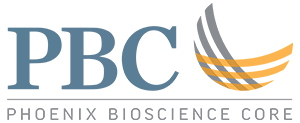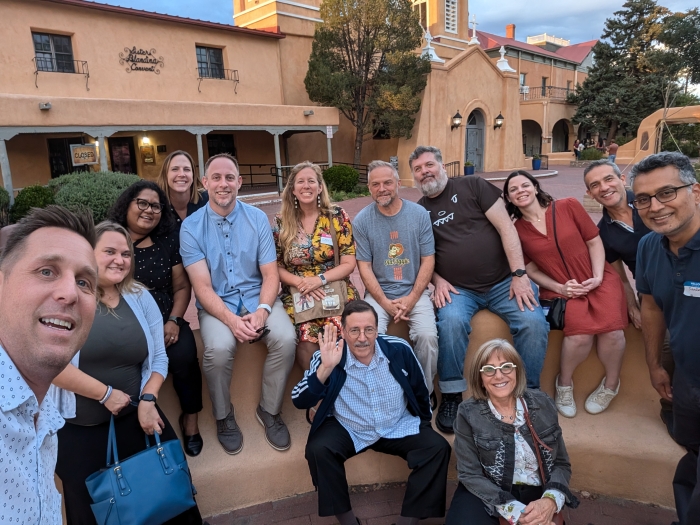According to the National Institutes of Health, a research project takes an average of 17 years to make it into clinical practice, not including abandoned projects. Professors at the College of Health Solutions, Matthew Buman and Cady Berkel, wanted a way for innovative science to become more impactful.
Six years ago, Buman and Berkel created the Dissemination and Implementation Affinity Network(D&I AN), a group of faculty, staff, and students interested in reducing the time it takes for research to make it into clinical practice. They started with a small training program in the College of Health Solutions. It has now branched out to include professionals across the Mountain West, including Utah, Arizona, New Mexico, and elsewhere.
D&I science investigates the challenges research projects face that make them unable to be transferred into practice and explores the solutions to those challenges.
“A lot of the science, even within the College of Health Solutions and across ASU, wasn’t being translated into practice,” Buman said. We were getting exciting results and learning all sorts of new things, and then there would be understandable roadblocks of getting it into practice.”
In 2021, the D&I AN collaborated with seven institutions to create the Mountain States Partnership for Community-Engaged Dissemination and Implementation Science (MS-CEDI).
The MS-CEDI hosts an intensive weeklong training program, followed by a nine-month mentoring period where research fellows learn all they can about D&I and implement it into their research. The goal is for fellows to submit a grant proposal to the National Institutes of Health (NIH) by the end of the program.
“This training program is all about equipping faculty and other scientists to advance their particular area of science,” Buman said.
This weeklong training offers a packed nearly 16-hour day, every day, which can include presentations, workshops, live feedback, and networking lunches from experts in the field of D&I science. Topics presented during the training include grant writing, increasing health equity, emphasizing community partnerships, and many more.
“All of the research projects that our fellows come with get me excited because they all represent the kind of research that is the most likely to make an impact in the real world,” Buman said.
In August in Albuquerque, New Mexico, 17 in-person, and more than 50 fellows over Zoom participated in the program.
“This year’s training was fabulous. I think we really gave a great environment for our fellows to think through a lot of their research ideas around their projects,” Buman said.

During the nine-month mentoring period, monthly meetings with other fellows are hosted by the D&I AN. Fellows are encouraged to talk about ongoing research projects and provide feedback to one another. They are also open to the public.
The ASU Seminar Series, sponsored by the ASU Dissemination & Implementation Affinity Network in collaboration with MS-CEDI, is a monthly webinar with D&I experts from across the nation. While the expert talks supplement the weeklong training topics, they are also very digestible standalone discussions about community-engaged D&I research. We invite anyone interested to pop into any of our virtual sessions at 10 a.m. MDT on the first Thursday of each month throughout the 2024-2025 academic year. No RSVP or registration required: https://asu.zoom.us/j/89092154872.
“We’ve revamped the nine-month process a lot to provide more interactive and helpful experiences, all based upon feedback that we’ve received from this year’s fellows, but also from previous years too,” Buman said.
Buman also talked about a mock review in May 2025 for the fellows to understand what the review process will look like and to incorporate feedback into their final submission.
College of Health Solutions Assistant Professor Niko Verdecias-Pellum participated in the program back in 2022-2023 and talked about the impact the training had on her.
“I now incorporate implementation evaluation in every grant that I write,” Verdecias-Pellum said. “I believe it is important not only to test the intervention but also to examine the process of implementing that intervention into an organization and how it reaches and impacts the appropriate audience.”
Unfortunately, her partner for her initial project left, so the project fell through. After reworking her original idea, she is now in the process of submitting it for a research grant to the National Institutes of Health with even more knowledge of D&I science.
“In this new partnership, I am working with a community-based social service organization and a clinical health center to integrate a social needs intervention that will be delivered by community health workers that will collaborate between the two organizations to support patients in identifying and addressing their unmet social needs to remove tradeoffs of choosing between, for example, paying the electricity bill or paying for medical-related expenses,” Verdecias-Pellum said.
Her new proposal is being submitted to the NIH this month, and she returned to the weeklong training in August as a mentor to the new group of fellows.
Another participant from 2022-2023, Karin Wachter, associate professor at the School of Social Work, reflected on her experience in the program.
“It was amazing,” Wachter said. “It was a room filled with very experienced and seasoned experts in this field of study who were eager to share their knowledge. The training was thought-provoking, rigorous, and very enjoyable.”
She joined to learn about implementation science and receive mentoring on grant writing. Her study focuses on adapting an economic and social empowerment intervention to reduce risks of intimate partner violence (IPV) among forcibly displaced populations. The NIH is reviewing the study.
Both Wachter and Verdecias-Pellum rave about their experiences in the program and are eager to tell others to participate.
“Do it [the D&I AN program]! It will provide an invaluable experience and toolkit for moving your research forward and developing you as a researcher,” Verdecias-Pellum said. “We get better every year as we incorporate feedback from each cohort to expand what we offer to trainees”
“Go for it – it’s fun, you’ll learn a ton, and meet amazing people. The skills you’ll gain are so important to any researcher working in practice settings. I’d do it again if they’d let me,” Wachter said.

